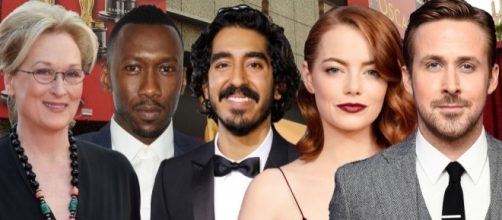Oscar Night is undeniably an unmissable appointment. Even though more and more I hear people say that it doesn't represent the real face of world cinema or that the times of the immortal masterpieces is, alas, gone since long, it still remains a massive and important event. It is not only one of the few moments of the year in which people get back to the cinema, leaving their "streaming" lives, drawn away from millions of TV series; for me, it's still an opportunity to see how our society affects movies and vice-versa.
What have Oscar 2017 nominated movies shown?
Once again, I have tried this year to win my personal marathon to see all the 62 movies nominated, including shorts and foreign movies. Of course, I have lost. But I have seen enough to figure out one or two things I want to share with you - and see if you agree or not. I won't highlight the obvious, stating that the #OscarSoWhite are NotSoWhite anymore. I'd rather notice something that most movies share, or that in some way I perceived that they share. The first word that comes to my mind is "understated". A word used so much in recent times to describe narratives, that I almost would say it's been ab-used. But "understated" pretty much describes the tone of many narrations this year.
In 2016 we had loud, complex, violent, fast-paced titles like The Revenant, Steve Jobs, and Mad Max; solitary but nervous and aggressive characters in The Martian or Room; stories of war spies, financial crisis, paedophilia, McCarthyism. After only one year, the heroes and their stories - the pace and the way they are told - have completely changed.
Desperately Seeking Connection.
The new heroes are often silent. I'd rather say shy, at first sight. For different reasons, they want to be left alone - with their sorrow, with their aspirations, with their dreams. There is no direct refusal of the other, but it's like they need to know that they can make it on their own. They have the society, or the common prejudice, or their inner self with the memories and the past, against them, but still, they inspire sympathy in the hearts of the good people surrounding them.
The women of Hidden Figures, mother and child in 20th Century women, uncle and nephew in Manchester By The Sea (my favourite), the three faces of the same man in Moonlight, the soldier of Hacksaw Ridge, the brothers (but also the sheriff) in Hell or High Water, the two adoptive brothers in Lion, even the pianist of la la land... all seem to share in some way this feeling. They are not the best communicators, they are even almost cute in their attempt of communication. But they all have an immense force lying within, most of the times even self-destructing (or fatal for the people around them). In the era of social Media, there is a need for connection. Not just a connection between characters.
There a new need of connecting with audiences. A new connection between who shows and who watches. And a connection with the past: a new way Hollywood has found to express nostalgia through visual effects.
A new cinematographic language.
So, in just one year, even the way of telling stories has slightly changed. Content over special effects: Intimacy over shouting: Slower rhythm aimed at introspective analysis, instead of intricated plots aimed at holding the attention. Maybe an unaware attraction to the theatre form (see "Fences" and "Moonlight"). Even the structure of the movies seems to be influenced by this division of the narration in blocks. The message itself is never explicit. Most of the people that loved "La La Land " think that it's a beautiful love story (and of course, a special love declaration to Hollywood itself).
But the ones who went deeper into the structure of the movie know that there is way more than just another love story in the movie. Other movies, this year, share this "understated" complexity.
[End of Part One]

